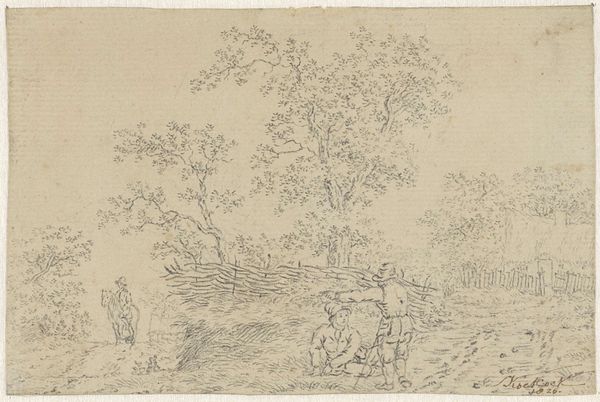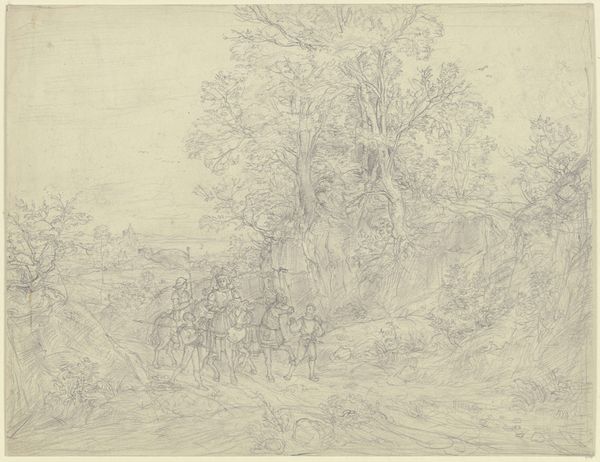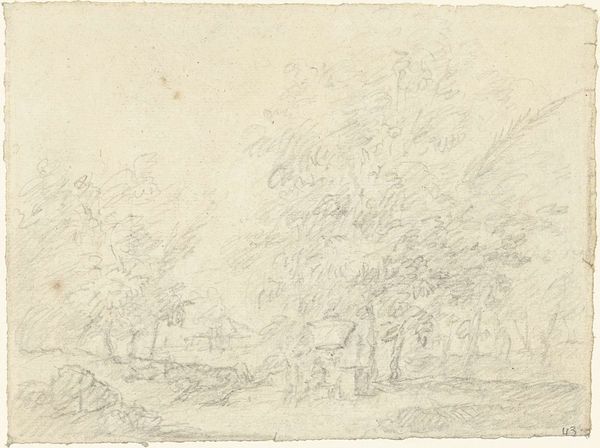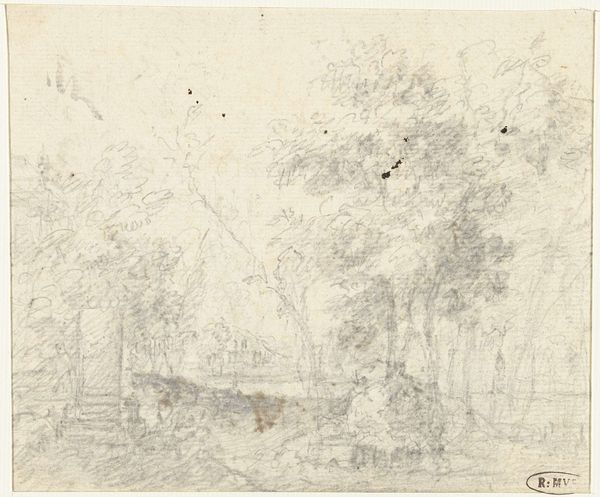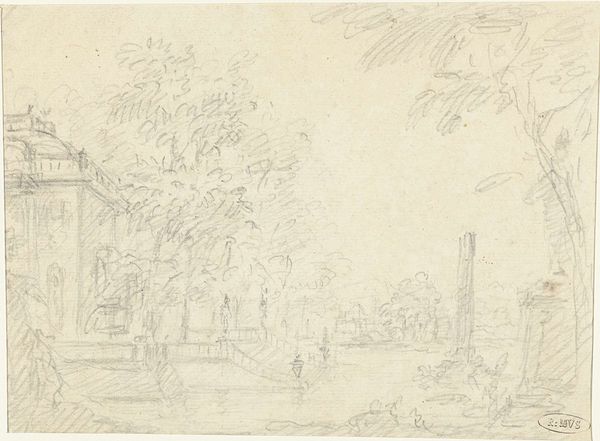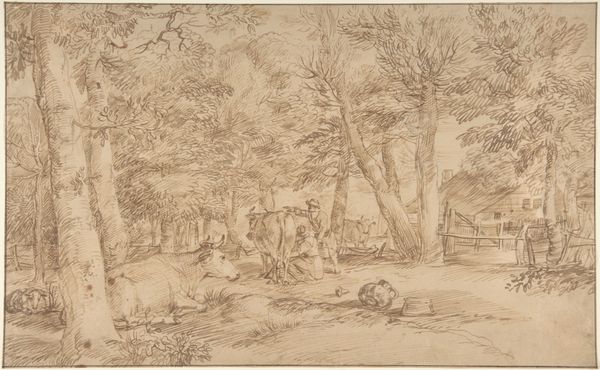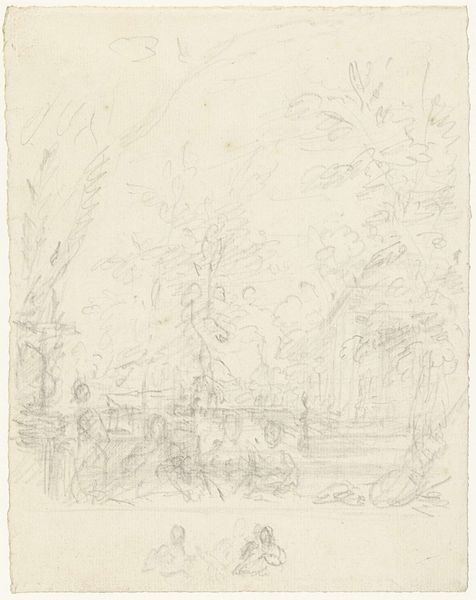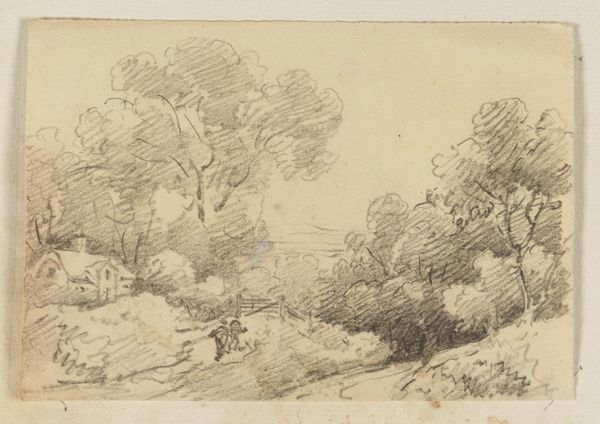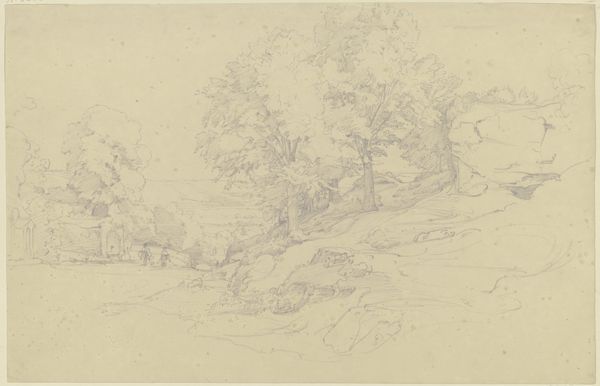
Dimensions: height 169 mm, width 210 mm
Copyright: Rijks Museum: Open Domain
Dionys van Nijmegen's drawing presents us with a landscape punctuated by a sculpture, rendered in pencil. Dominating the scene, the sculpture, likely a classical figure, stands as a poignant symbol. This motif hearkens back to antiquity, where sculptures were embodiments of ideals and immortalized gods and heroes. Their placement in landscapes transformed natural settings into sacred or commemorative spaces. This echoes in Renaissance and Baroque gardens, where sculptures similarly evoked a sense of timelessness, bridging the natural world with human achievement. Consider, for instance, the Belvedere Apollo, whose idealized form and presence resonated through centuries, influencing artists like van Nijmegen. The recurrence of the sculpted figure in landscapes, from ancient groves to 18th-century gardens, suggests a deep-seated human desire to impose order, beauty, and permanence onto the fleeting and chaotic natural world. It's as if the artist taps into a collective memory, reviving this symbol in a continual, cyclical evolution.
Comments
No comments
Be the first to comment and join the conversation on the ultimate creative platform.
